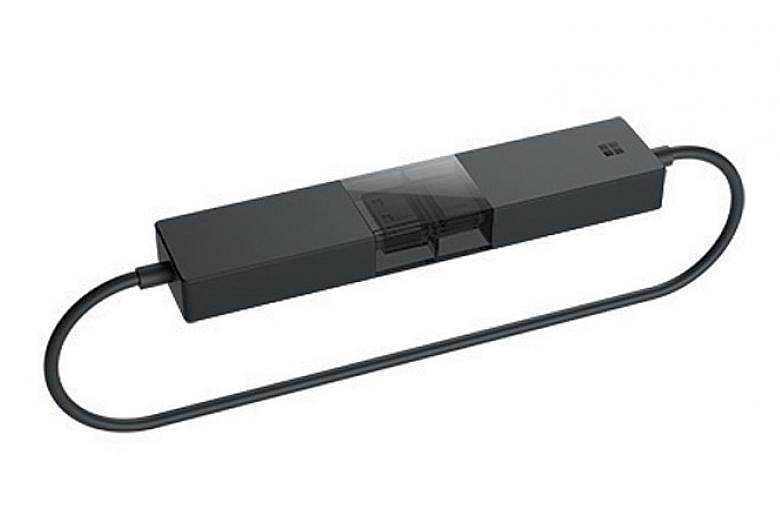The Microsoft Wireless Display Adapter is a pocket-sized dongle that projects the screen of your laptop, smartphone or tablet, to an external display such as a TV.
It works exactly as advertised. In fact, think of it as an HDMI cable without the cable. Simply plug the adapter into the display's HDMI port. The other end of the adapter goes into a USB port, which it draws power from.
A cable attachment covers both ports to protect them from dust and forms a neat loop that makes it easy to carry. The adapter uses Miracast, a form of Wi-Fi Direct technology, to transmit video and audio from your device to itself. It also supports Intel WiDi, a similar wireless display technology found in PCs.
I like that it works without a wireless network or router, making it convenient for places where there is no Wi-Fi. But it does not work with Apple devices, which use the proprietary AirPlay technology.
When the adapter is first plugged into a screen, it displays instructions on how to connect to it.
For a Windows 10 computer, it is as simple as opening the Action Center and clicking Connect to scan for the wireless adapter. For Android Nexus devices, simply click on the Cast option from the pulldown notification pane.
-
TECH SPECS
PRICE: $97
WEIGHT: 33g
CONNECTOR: HDMI (USB-powered)
-
RATING
FEATURES: 3/5
PERFORMANCE: 4/5
VALUE FOR MONEY: 3/5
OVERALL: 4/5
The Wireless Adapter app in the Windows Store lets you change the adapter settings. For instance, you can add a password PIN to prevent unauthorised users from connecting to the adapter.
In my testing, there was a bit of latency with the adapter that makes it less than ideal for games. It takes a fraction longer for my input to be reflected on the connected display compared with my device's own display. But this lag is barely noticeable for other tasks such as video playback and presentations.
The wireless adapter worked flawlessly with two different Windows 10 laptops I had on hand. It also connected to my Nexus 5 smartphone without a hitch. It was a breeze to use compared to previous Miracast adapters I've tried, that have issues such as high latency and connection errors.
Vincent Chang
•Verdict: A simple and useful accessory for road warriors.


